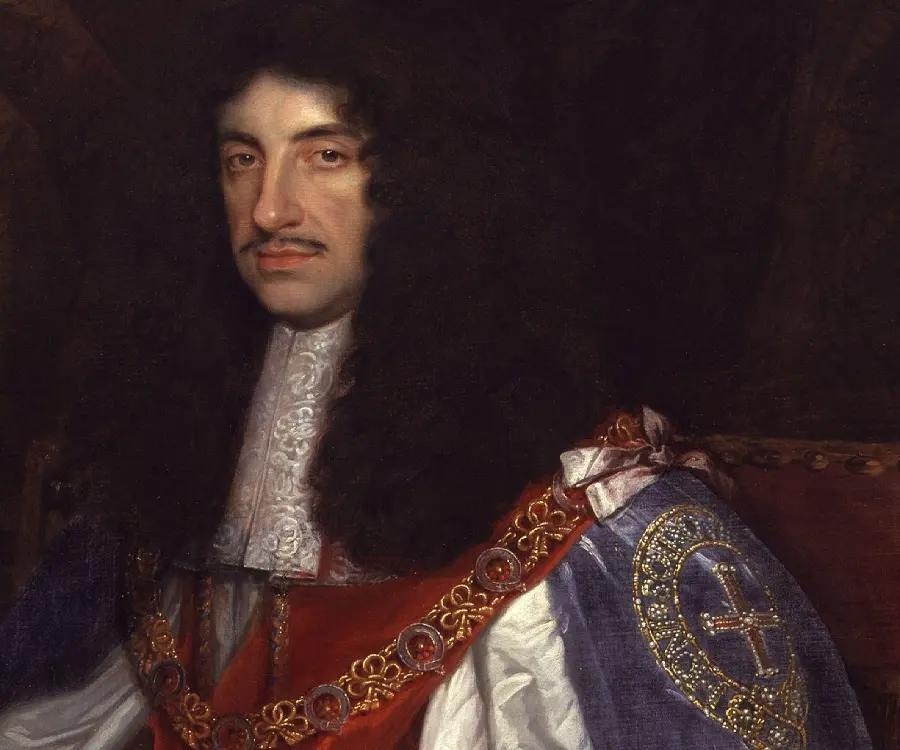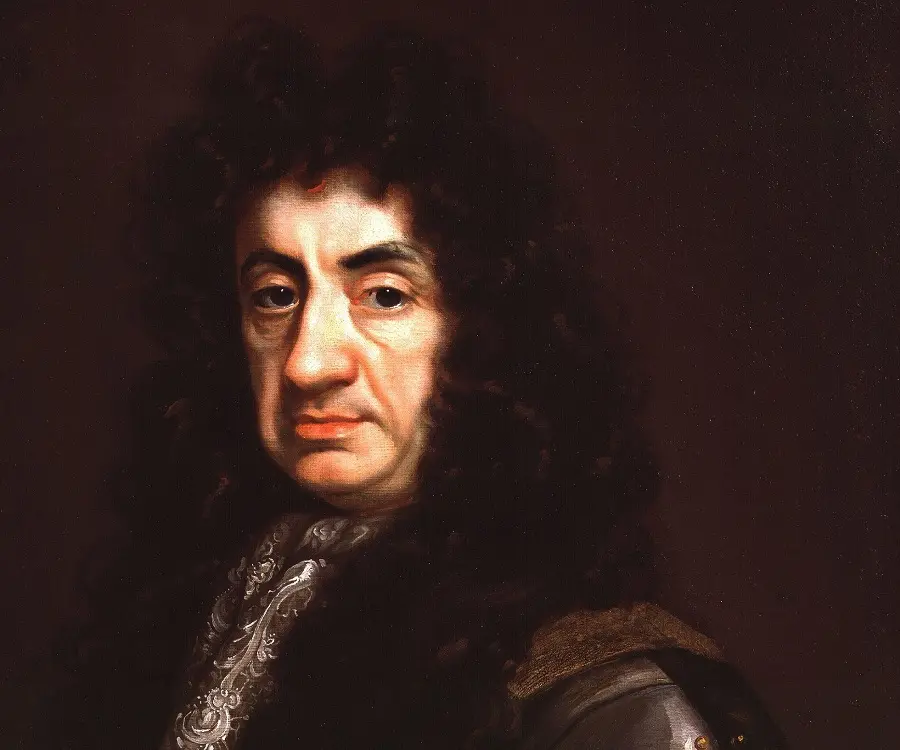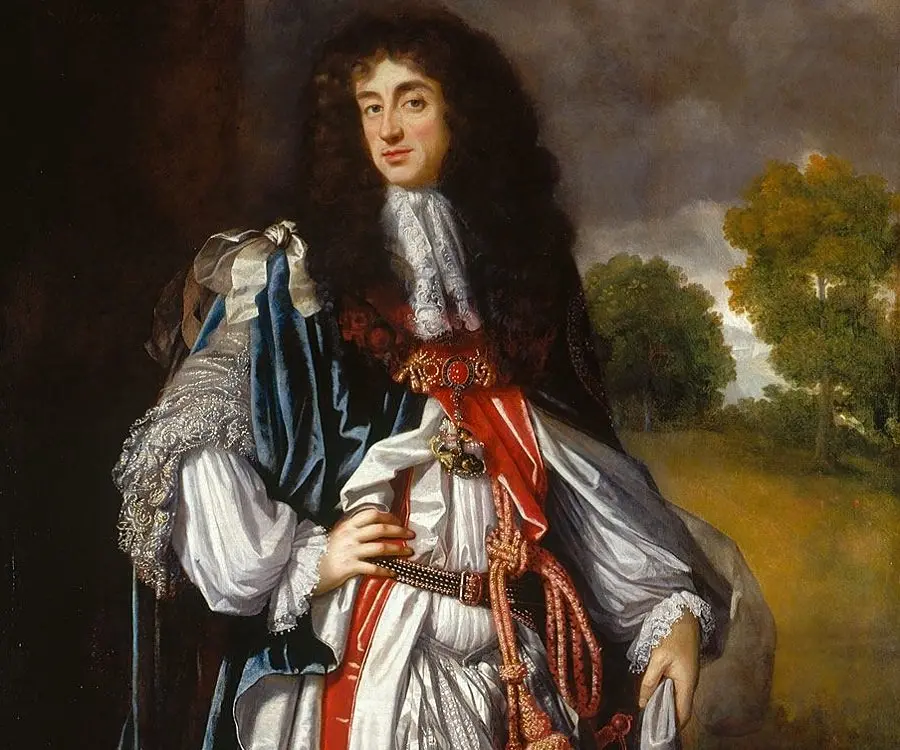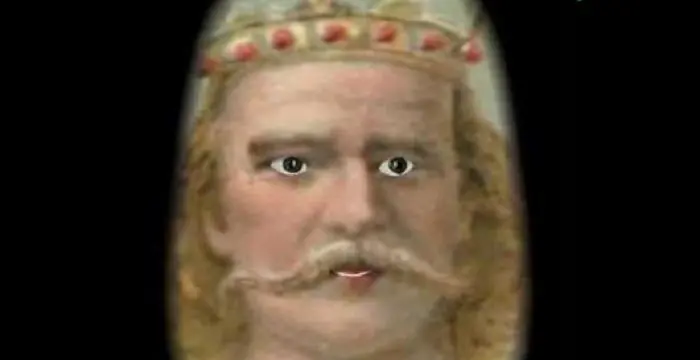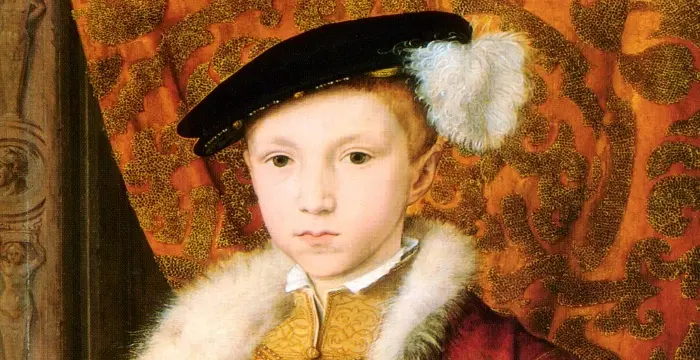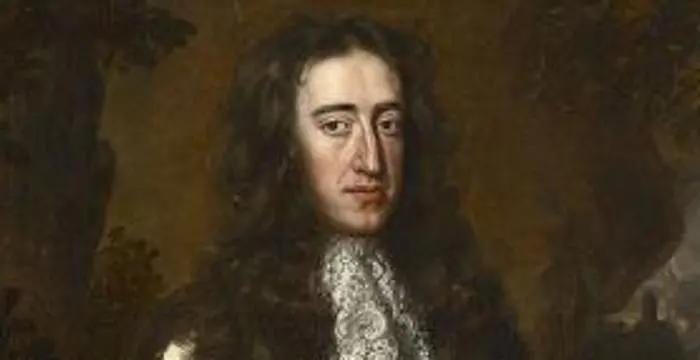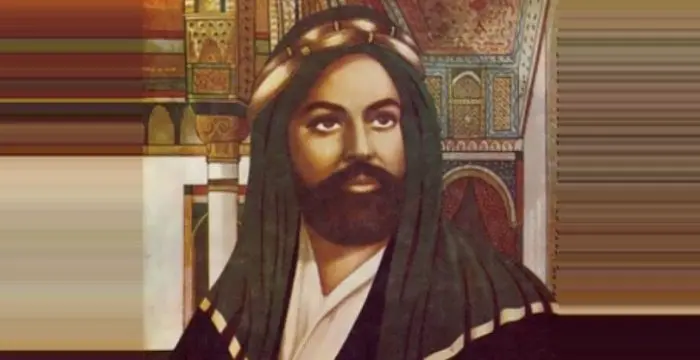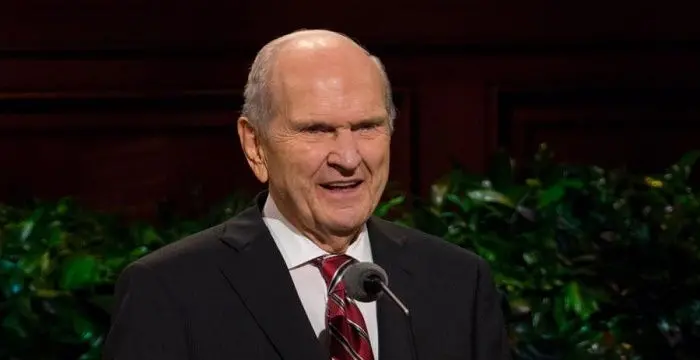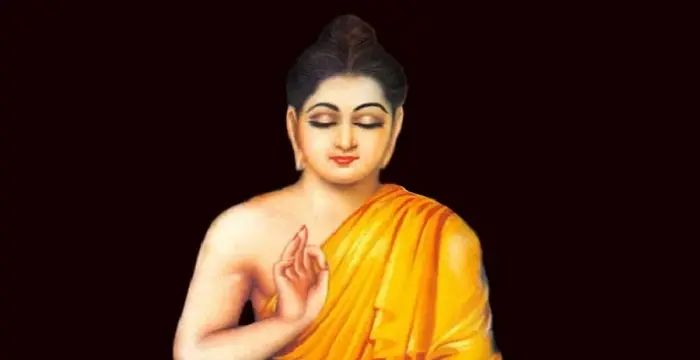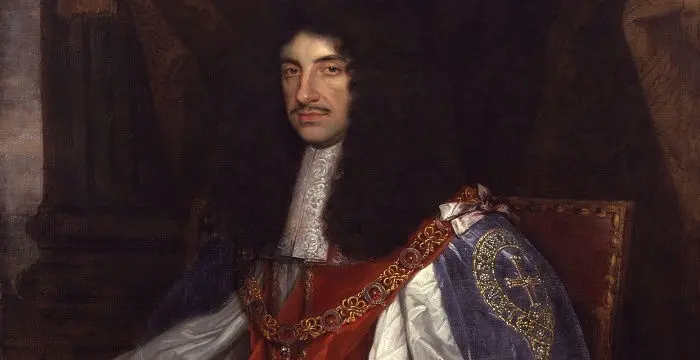
Charles II - Emperors, Family and Childhood
Charles II's Personal Details
Charles II was the monarch of England, Scotland, and Ireland
| Information | Detail |
|---|---|
| Birthday | May 29, 1630 |
| Died on | February 6, 1685 |
| Nationality | British |
| Famous | Carefree, Historical Personalities, Emperors & Kings, Spiritual & Religious Leaders, Emperors, King of England, Kings |
| Spouses | Catherine of Braganza |
| Siblings | James II of England |
| Childrens | 1st Duke of Grafton, 1st Duke of Monmouth, 1st Duke of Northumberland, 1st Duke of Richmond, 1st Duke of St Albans, 1st Earl of Plymouth, 2nd Duke of Cleveland, Anne Lennard, Charles Beauclerk, Charles FitzCharles, Charles FitzRoy, Charles Lennox, Charlotte Lee Countess of Lichfield, Countess of Sussex, George FitzRoy, Henry FitzRoy, James Scott, Lady Barbara FitzRoy, Lady Mary Tudor |
| Birth Place | St James's Palace |
| Religion | Roman Catholic |
| Gender | Male |
| Father | Charles I of England |
| Mother | Henrietta Maria of France, Henrietta Maria of France |
| Sun Sign | Gemini |
| Born in | St James's Palace |
| Famous as | King of England, Scotland & Ireland |
| Died at Age | 54 |
// Famous Emperors
Sundiata Keita
Sundiata Keita was the founder of the Mali Empire in West Africa. This biography profiles his childhood, early life, struggles, founding of empire, rule, administration, achievements and also gives some fun facts.
Ashoka
Ashoka was the third emperor of the Mauryan Dynasty and ruled almost the entire Indian subcontinent. This biography profiles his childhood, life, reign, achievements and timeline
Murad IV
Murad IV was one of the mighty Sultans in the history of the Ottoman Empire. This biography profiles his childhood, family, accession, rule, administration and timeline.
Charles II's photo
Who is Charles II?
Popularly referred to as the ‘Merry Monarch’, Charles II was known for his lively and exuberant nature, which prevailed in his court as well, that mostly functioned on hedonism and cavorting style. Born to King Charles I of England and Queen Henrietta Maria, Charles II was conferred the titles of Duke of Cornwall and Duke of Rothesay soon after his birth. He later took up the title of Prince of Wales. At the tender age of fourteen, he along with his father fought in the Battle of Edgehill. However, the unfavorable result of the war led young Charles to a life of exile. He returned to be crowned as the monarch of England, Scotland, and Ireland. Charles II’s reign was marked by two tragic events in British history - the Great Plague of London and the Great Fire of London. His relationship with the Parliament was not very cordial and he also plotted fruitless military missions against the Dutch. His era became widely known as the restoration period in English history.
// Famous Kings
Sundiata Keita
Sundiata Keita was the founder of the Mali Empire in West Africa. This biography profiles his childhood, early life, struggles, founding of empire, rule, administration, achievements and also gives some fun facts.
Ashoka
Ashoka was the third emperor of the Mauryan Dynasty and ruled almost the entire Indian subcontinent. This biography profiles his childhood, life, reign, achievements and timeline
Murad IV
Murad IV was one of the mighty Sultans in the history of the Ottoman Empire. This biography profiles his childhood, family, accession, rule, administration and timeline.
Childhood & Early Life
Charles II was born in the St. James's Palace, London to Charles I and Henrietta Maria. His father was the ruler of the kingdoms of Scotland, England and Ireland.
He was baptised at The Chapel Royal, by the Anglican Bishop of London, William Laud. At the time of his birth, he was conferred with the title of Duke of Cornwall and Duke of Rothesay. At the age of eight, he acquired the title of Prince of Wales.
During the 1640s, he fully supported his father, who in turn fought the Parliamentary and Puritan forces in English Civil War.
By the time he turned fourteen, he was made titular commander of the English forces in the West Country and participated in the campaigns of 1645. However, with the imminent loss of his father, he fled first to Isles of Scilly, followed by Jersey and finally to France.
By 1648, he relocated to The Hague, South Holland, where his sister Mary and brother-in-law William II, Prince of Orange aided him in the royalist cause.
Accession & Reign
In 1649, his father was beheaded and that year the Parliament of Scotland declared him to be the King of Great Britain and Ireland. However, the English Parliament made the declaration unlawful.
He was not allowed to enter Scotland unless he accepted Presbyterianism in the British Isles. He later assigned General Montrose to threaten the Scots with an invasion that would force to bring upon an agreement which would be in favour of him. .
On June 23, 1650 he landed in Scotland, where he formally accepted Presbyterian Church governance and abandoned the Espiscopal governance in Britain. Though he won the support from Scotland, his move made him largely unpopular in Britain. He was crowned as the King of Scotland on January 1, 1651.
Later in 1651, the English Civil War came to an end after The Battle of Worcester, in which the Scottish forces were defeated by Oliver Cromwell. Evading capture, Charles II fled to England.
After the Battle of Worcester, Oliver Cromwell became the Lord Protector of Scotland, England, British Isles and Ireland while Charles II went in exile to France, the United Provinces and the Spanish Netherlands.
In 1658, Oliver Cromwell passed away and eventually his son Richard became the next Lord Protector. Richard, however, did not have any power in the Parliament and was abdicated the following year after the Protectorate was put to an end.
In April 1660, the Convention Parliament voted for a resolution and later chose to elect a free parliament. Later that year after the Declaration of Breda, Charles II agreed to pardon his father’s enemies.
In May 1660, he was invited by the English Parliament to return after the monarchy was restored. He arrived in London on May 29th where he was well received and declared to be the king.
On April 23 1661, he was crowned at the Westminster Abbey, City of Westminster in London. The previous day, he went on the traditional procession from Tower of London to Westminster Abbey. He was the last sovereign to do so.
During his reign as the monarch, the English parliament passed the Clarendon Code. This was passed in order to discourage the non-conformity to the Church of England.
In 1665, he faced one of the biggest challenges of his monarchy - the Great Plague of London, in which the death toll rose to 7000 per week. All the attempts made to contain the disease failed as it spread rapidly.
The 1666 Great Fire of London acted as a fuel to fire. Though it marked the end of the Great Plague, the fire which started on September 2, engulfed about 13, 200 houses and 87 churches, including the St Paul’s Cathedral.
Meanwhile, the war against Holland resulted unfavourably as the English navy lost to the Dutch Fleet. Fearing that the weakened condition would result in the French invasion of England, he sent his sister Henrietta to strike a deal with Louis XIV of France.
Louis XIV agreed to help England on the condition that Charles II became a Catholic. In 1670, Charles signed the secret Treaty of Dover with King Louis XIV of France, according to which Charles II would be provided with a yearly pension and about 6000 soldiers once he announced his change of ideology to the people of England.
Playing it slowly, he tried persuading people from the parliament by bribing them. He even advised them to get friendly with the French government. However, the majority of the members of the House of Common were loyal Protestants.
Despite his word to Louis XIV, he failed to prevent the Catholics from Protestant persecution. Also, he could not appoint Catholics to important offices and as Member of Parliament.
In 1672, he passed The Royal Declaration of Indulgence, which was an attempt to grant religious liberty to Protestant nonconformists and Roman Catholics. This was however withdrawn by the English Parliament.
Towards the end, the question as to who would succeed the throne became a matter of much contemplation. He dissolved the parliament many a times so that the Exclusion Bill should not be passed, as it would exclude his brother James from succeeding the throne.
Personal Life & Legacy
Around 1648, while he was living in The Hague, South Holland, he was romantically involved with Lucy Walter. The couple did not marry but had a son named, James Crofts.
In 1662, he married Catherine of Braganza, the daughter of the King of Portugal. Though Catherine did not bear him a child, he fathered many children through his illegitimate affairs with his mistresses including Barbara Villiers, Lady Castlemaine, Moll Davis, Nell Gwyn, Elizabeth Killigrew, Catherine Pegge, and Louise de K�rouaille, Duchess of Portsmouth.
He died at the age of 54 at the Whitehall Palace, London after suffering from an apoplectic fit four days earlier. At the time of his death, he admitted to being a Roman Catholic.
Numerous statues have been erected all over England, including Soho Square, Edinburgh's Parliament Square, Three Cocks Lane in Gloucester and Lichfield Cathedral, to pay a tribute to him. He has been depicted in popular culture. A city on South Carolina, Charleston, has been named after him.
He was a patron of arts and science and founded the Royal Observatory. Furthermore, he supported the Royal Society, then led by Robert Hooke, Robert Boyle and Sir Isaac Newton.
Trivia
The period of rule of this English monarch, popularly referred to as Merry Monarch, is known as the Restoration Period.
// Famous King of England
Harold Godwinson
Harold Godwinson was an Anglo Saxon King of England in the 11th Century. Check out this biography to know about his birthday, childhood, family life, achievements and fun facts about him.
Edward VI of England
Edward VI served as the King of England, from 1547 until his death in 1553. Check out this biography to learn in details about his life, his works as a king and timeline
William III of England
William III was the stadtholder of the main provinces of the Dutch Republic and the king of England, Ireland, and Scotland (King William II of Scotland). Check out this biography to know more about his childhood, family, life history, etc.
Charles II biography timelines
- // 29th May 1630Charles II was born in the St. James's Palace, London to Charles I and Henrietta Maria. His father was the ruler of the kingdoms of Scotland, England and Ireland.
- // 1640During the 1640s, he fully supported his father, who in turn fought the Parliamentary and Puritan forces in English Civil War.
- // 1648By 1648, he relocated to The Hague, South Holland, where his sister Mary and brother-in-law William II, Prince of Orange aided him in the royalist cause.
- // 1648Around 1648, while he was living in The Hague, South Holland, he was romantically involved with Lucy Walter. The couple did not marry but had a son named, James Crofts.
- // 1649In 1649, his father was beheaded and that year the Parliament of Scotland declared him to be the King of Great Britain and Ireland. However, the English Parliament made the declaration unlawful.
- // 3rd Jun 1650 To 1st Jan 1651On June 23, 1650 he landed in Scotland, where he formally accepted Presbyterian Church governance and abandoned the Espiscopal governance in Britain. Though he won the support from Scotland, his move made him largely unpopular in Britain. He was crowned as the King of Scotland on January 1, 1651.
- // 1651Later in 1651, the English Civil War came to an end after The Battle of Worcester, in which the Scottish forces were defeated by Oliver Cromwell. Evading capture, Charles II fled to England.
- // 1658In 1658, Oliver Cromwell passed away and eventually his son Richard became the next Lord Protector. Richard, however, did not have any power in the Parliament and was abdicated the following year after the Protectorate was put to an end.
- // 1660In April 1660, the Convention Parliament voted for a resolution and later chose to elect a free parliament. Later that year after the Declaration of Breda, Charles II agreed to pardon his father’s enemies.
- // 1660In May 1660, he was invited by the English Parliament to return after the monarchy was restored. He arrived in London on May 29th where he was well received and declared to be the king.
- // 23rd Apr 1661On April 23 1661, he was crowned at the Westminster Abbey, City of Westminster in London. The previous day, he went on the traditional procession from Tower of London to Westminster Abbey. He was the last sovereign to do so.
- // 1662In 1662, he married Catherine of Braganza, the daughter of the King of Portugal. Though Catherine did not bear him a child, he fathered many children through his illegitimate affairs with his mistresses including Barbara Villiers, Lady Castlemaine, Moll Davis, Nell Gwyn, Elizabeth Killigrew, Catherine Pegge, and Louise de K�rouaille, Duchess of Portsmouth.
- // 1665In 1665, he faced one of the biggest challenges of his monarchy - the Great Plague of London, in which the death toll rose to 7000 per week. All the attempts made to contain the disease failed as it spread rapidly.
- // 1666The 1666 Great Fire of London acted as a fuel to fire. Though it marked the end of the Great Plague, the fire which started on September 2, engulfed about 13, 200 houses and 87 churches, including the St Paul’s Cathedral.
- // 1670Louis XIV agreed to help England on the condition that Charles II became a Catholic. In 1670, Charles signed the secret Treaty of Dover with King Louis XIV of France, according to which Charles II would be provided with a yearly pension and about 6000 soldiers once he announced his change of ideology to the people of England.
- // 1672In 1672, he passed The Royal Declaration of Indulgence, which was an attempt to grant religious liberty to Protestant nonconformists and Roman Catholics. This was however withdrawn by the English Parliament.
- // 6th Feb 1685He died at the age of 54 at the Whitehall Palace, London after suffering from an apoplectic fit four days earlier. At the time of his death, he admitted to being a Roman Catholic.
// Famous Spiritual & Religious Leaders
Swami Vivekananda
Swami Vivekananda was the chief disciple of Sri Ramakrishna, and was responsible for awakening India spiritually. Check this biography to know in detail about his life, profile and timeline.
Prophet Muhammad
Prophet Muhammad was the founder of Islam, one of the most widespread religions in the world. This biography profiles his childhood, life story, achievements and more.
Murad IV
Murad IV was one of the mighty Sultans in the history of the Ottoman Empire. This biography profiles his childhood, family, accession, rule, administration and timeline.
Eckhart Tolle
Eckhart Tolle is a well-known spiritual leader, and author. Check out this biography to know about his childhood, family, personal life, spiritual awakening, etc.
Russell M. Nelson
Russell M. Nelson is an American religious leader, author, and philanthropist. Check out this biography to know about his birthday, childhood, family life, achievements and fun facts about him.
Gautama Buddha
Gautama Buddha was a spiritual leader on whose teachings Buddhism was founded. This biography of Gautama Buddha provides detailed information about his childhood, life, achievements, works & timeline
Charles II's FAQ
What is Charles II birthday?
Charles II was born at 1630-05-29
When was Charles II died?
Charles II was died at 1685-02-06
Where was Charles II died?
Charles II was died in Palace of Whitehall
Which age was Charles II died?
Charles II was died at age 54
Where is Charles II's birth place?
Charles II was born in St James's Palace
What is Charles II nationalities?
Charles II's nationalities is British
Who is Charles II spouses?
Charles II's spouses is Catherine of Braganza
Who is Charles II siblings?
Charles II's siblings is James II of England
Who is Charles II childrens?
Charles II's childrens is 1st Duke of Grafton, 1st Duke of Monmouth, 1st Duke of Northumberland, 1st Duke of Richmond, 1st Duke of St Albans, 1st Earl of Plymouth, 2nd Duke of Cleveland, Anne Lennard, Charles Beauclerk, Charles FitzCharles, Charles FitzRoy, Charles Lennox, Charlotte Lee Countess of Lichfield, Countess of Sussex, George FitzRoy, Henry FitzRoy, James Scott, Lady Barbara FitzRoy, Lady Mary Tudor
What is Charles II's religion?
Charles II's religion is Roman Catholic
Who is Charles II's father?
Charles II's father is Charles I of England
Who is Charles II's mother?
Charles II's mother is Henrietta Maria of France, Henrietta Maria of France
What is Charles II's sun sign?
Charles II is Gemini
How famous is Charles II?
Charles II is famouse as King of England, Scotland & Ireland



